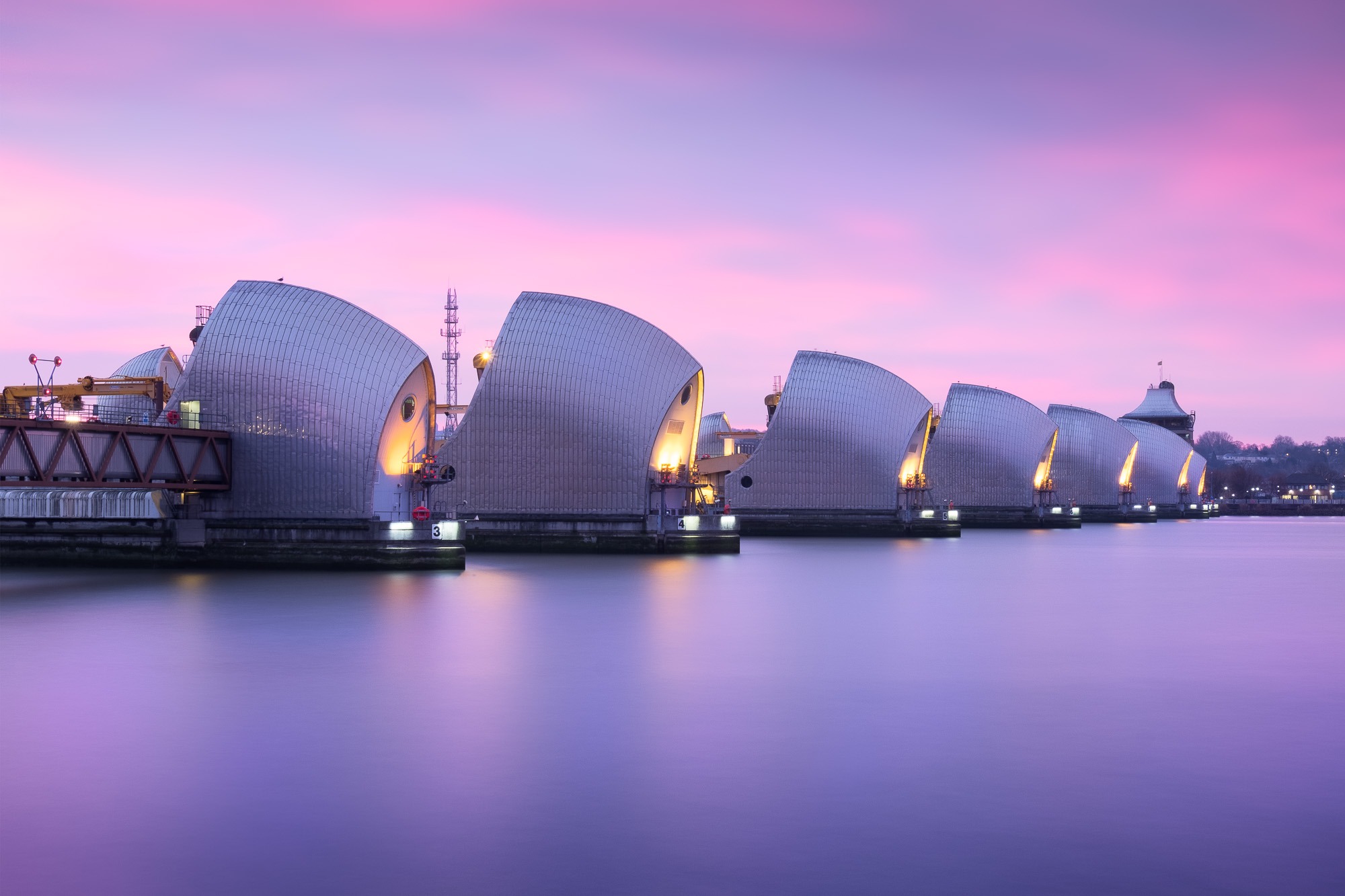I spent pre-dawn time by the imposing silhouette of the Thames flood defence. It was a breath-taking sight when the dark blue colours of the sky turned pink and purple' and when they reflected on the beautiful structure that guards the city from the dangers of high water. I really wanted to stay out and just walk along the river for the rest of the day, but my working day was about to start and I couldn't spare any more time on daydreaming. It was
time to face the reality and go to the office.
The Thames Barrier, built in 1982, was designed to protect London from flooding caused by tidal surges. A storm surge generated by low pressure in the Atlantic Ocean sometimes tracks eastwards past the north of Scotland and may then be driven into the shallow waters of the North Sea. The surge tide is funnelled down the North Sea which narrows towards the English Channel and the Thames Estuary. If the storm surge coincides with a spring tide, dangerously high water levels can occur in the Thames Estuary. With no barrier, at high tide, the sea would normally flow up the estuary and into London, pushing the river water back. With all the extra rainfall, this could worsen the flooding. The barrier prevents this from happening. The gates are left shut and the river water is held until the tide turns. If there was no barrier, the Houses of Parliament, the O2 arena, Tower Bridge, and areas including Southwark, the Isle of Dogs, Whitechapel and West Ham could be flooded.
After periods of heavy rain west of London, floodwater can also flow down the Thames from areas upstream of London. Because the river is tidal from Teddington weir all the way through London, this is only a problem at high tide, which prevents the floodwater from escaping out to sea. From Teddington the river is opening out into its estuary, and at low tide it can take much greater flow rates the further one goes downstream. In periods when the river is in flood upstream, if the gates are closed shortly after low tide, a huge empty volume is created behind the barrier which can act as a reservoir to hold the floodwater coming over Teddington weir. Most river floods will not fill this volume in the few hours of the high tide cycle during which the barrier needs to be closed. If the barrier were not there, the high tide would fill up this volume instead, and the floodwater could then spill over the river banks in London.
Share this story

